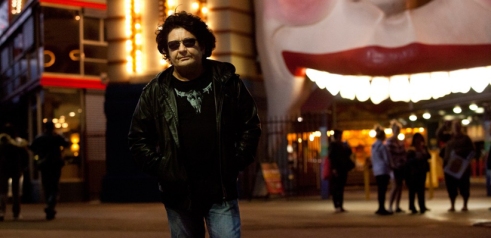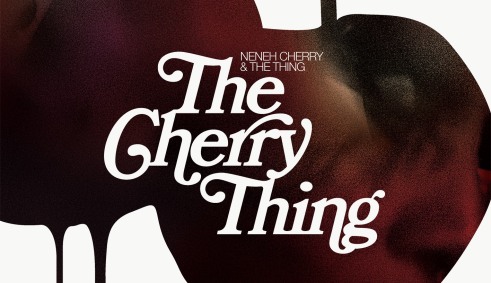Every year for the past five, iconic Australian songwriter Richard Clapton has held a show at Sydney’s State Theatre previewing new material and playing his Greatest Hits. Every year Clapton at the State sells out within days, largely because Clapton and his songs have been so much a part of his fans’ lives, stretching back to the mid-70s.
Songs such as ‘Deep Water’, ‘Down In The Lucky Country’ and ‘Capricorn Dancer’ were – like all meaningful pop music – very much part of the wild colonial soundtrack of Australian life back then, and they still resonate today.
This year’s State Theatre concert was significantly different in that this year Richard Clapton has a shiny new album to play to us. In fact, the August 18 show was the opener of a national tour, August through November, to promote ‘Harlequin Nights’, his first album since 2004 and containing, in Clapton’s own estimation “some of the best songs I have put my mind to for many years”.
Clapton seemed almost apologetic to the full house for playing a selection of songs from ‘Harlequin Nights’ in the show’s first half. He mock-sardonically promised us a second half of “the songs you love” – the Hits. He needn’t have worried. ‘Harlequin Nights’ is an easy album to love – very much a Richard Clapton album in every way: wise and wry by turns, drily observational and giddily poetic and – yes – essentially Australian in its accents and its pictures.
A gentle maracas shake from drummer Mick Skelton and the band dove into the warms waters of show opener (and ‘Harlequin Nights’ opener) ‘Sunny Side Up’, a bright note of optimism from a man known more for his dry take on life’s chafing realities.
Then it was the beautiful and wide-screen ‘Vapour Trails’ – this has to be one of the songs of Clapton’s career, if not Australian rock. Like the best of Neil Young, ‘Vapour Trails’ makes a vaulting magnificence from a few simple elements, swelling to a heart-filling high. It is truly magic. It made my wife cry.
The two rockers from ‘Harlequin Nights’, ‘Skanky Town’ (“This song could be about Sydney or it could be about Tokyo”) and ‘Dancing With The Vampires’ (“So many things driving me insane/Till I feel like Charlie Sheen”) saw the band really loosen up and shake out the jams. (I could have sworn I saw a vampire dancing during ‘Dancing With The Vampires’ but it could have just been a trick of the gothic shadows of the ornate old State).
After an intermission Clapton returned with his Greatest Hits. From the more secure vantage point of the Hits part of the show, he admitted nerves and ‘trials and tribulations’ during the ‘Harlequin Nights’ songs. They sounded fine to me – kicked along by one of the better bands in the country: Clapton himself said of the band “it’s like taking the Ferrari for a run”.
And to hear that band – slick when they had to be, grinding raw when they had to be – power Clapton’s hits from the 70s and 80s was a thrill. From the Byron Bay lullaby ‘Blue Bay Blues’ through ‘Deep Water’, ‘Down In The Lucky Country’ and ‘Capricorn Dancer’ to the streamlined rocker ‘I Am An Island’ they were all there.
Nostalgia shows are one thing – RSL clubs host these sorry waxen spectacles every week – but this was very very different: Clapton’s powerful and smart songs, beautifully shaped for speed or for drifting or for dreaming, played with heart and fire by this five piece, was immediate and often hair-raising.
Young guitarist Danny Spencer, Richard Clapton’s collaborator on much of ‘Harlequin Nights’, worked like a Trojan on his side of the stage, obviously in a place of joy. Harmony vocalist Natasha Stuart (one of Sydney’s finest) provided bright sparkle to Clapton’s big choruses throughout.
 One of the most affecting pieces of the night was the first encore ‘The Best Years Of Our Lives’, with just Clapton and Stuart singing over the top of feathery keys “Don’t waste time/These are the best years of our lives”. It seemed to affect Clapton as much as it did us all; he walked over and clung to Stuart in a hug.
One of the most affecting pieces of the night was the first encore ‘The Best Years Of Our Lives’, with just Clapton and Stuart singing over the top of feathery keys “Don’t waste time/These are the best years of our lives”. It seemed to affect Clapton as much as it did us all; he walked over and clung to Stuart in a hug.
That hug showed the humanity and the vulnerability of one of our most important songwriters and musical thinkers. That humanity was always what grabbed you in a Richard Clapton song – even in those pieces where he is all steely-eyed cynicism, it is always there. And the new album ‘Harlequin Nights’ shows, 35 years after ‘Girls On The Avenue’ and ‘Goodbye Tiger’, Richard Clapton is still a voice for his age.
Richard Clapton’s tour details are at his website
Photos by Ant Ritz – www.antritz.com.au
Published August 2012 on liveguide.com.au














